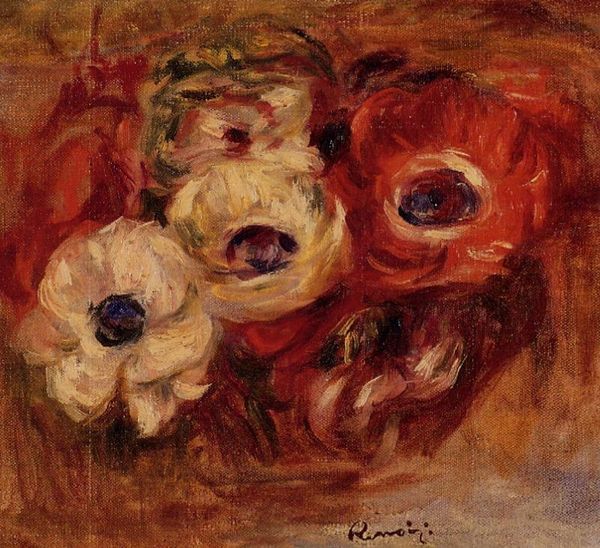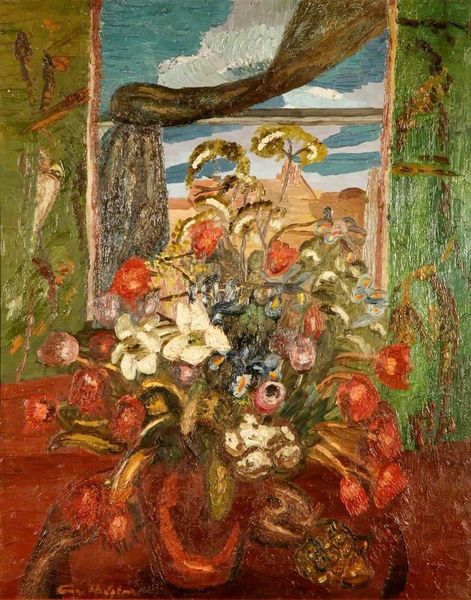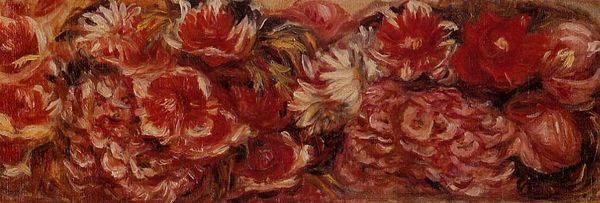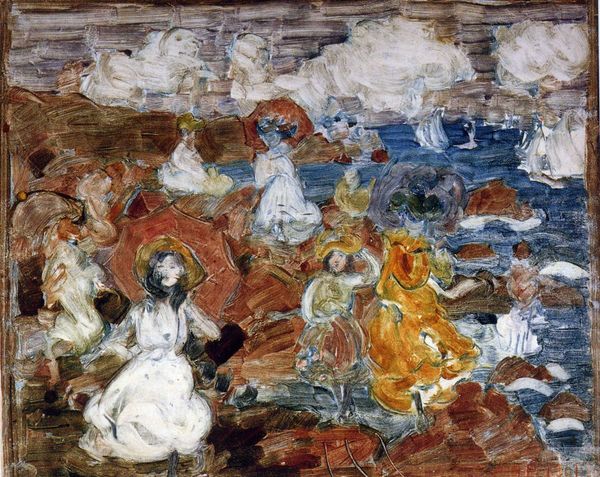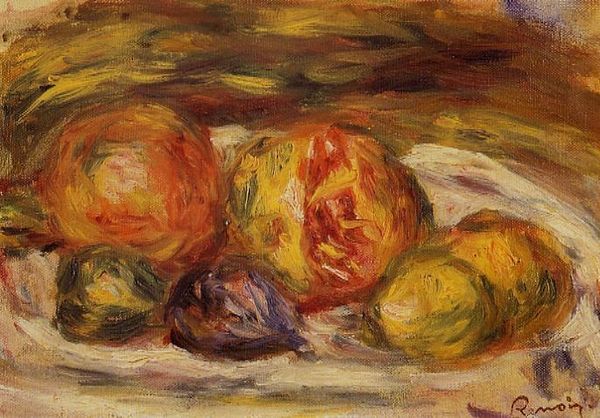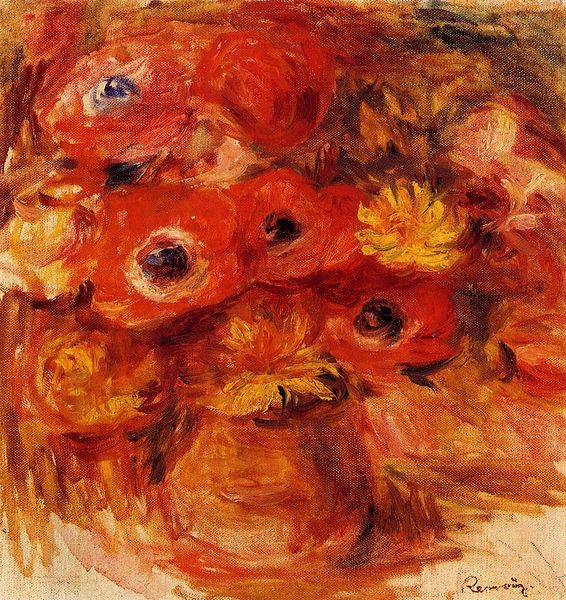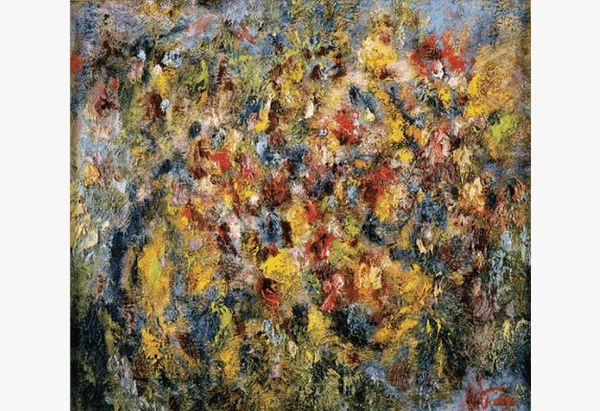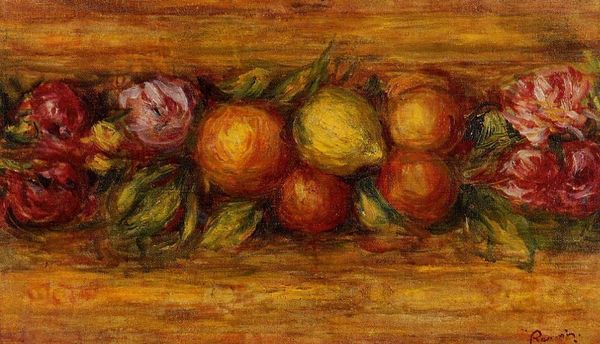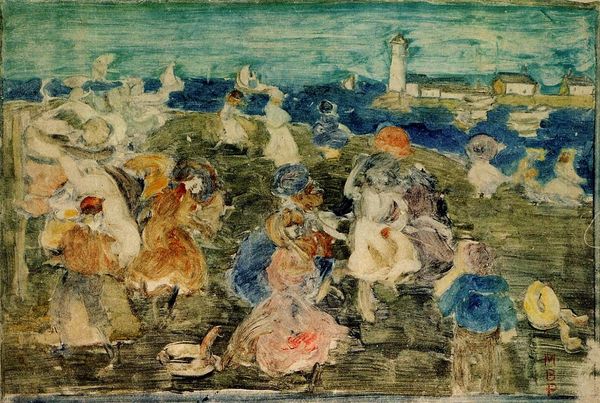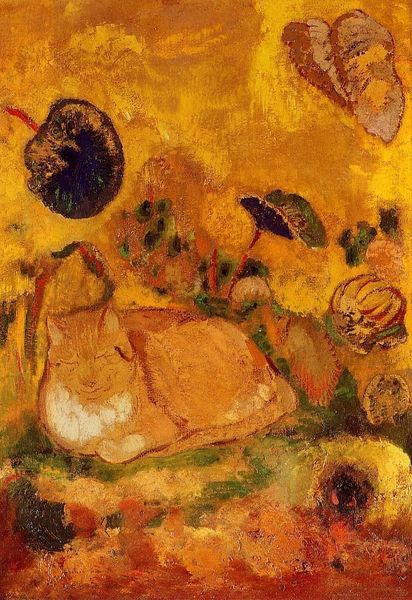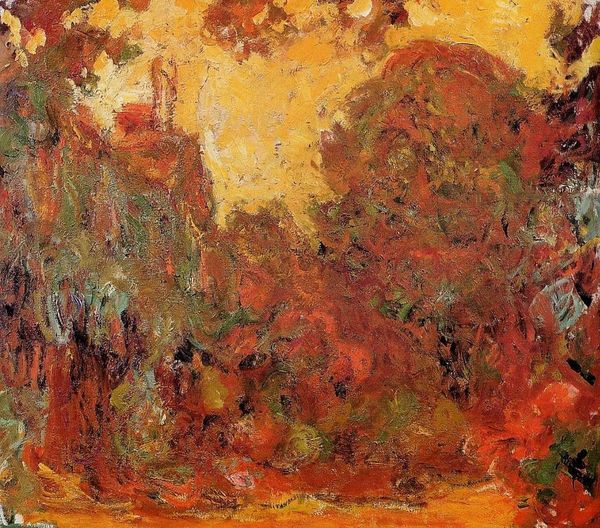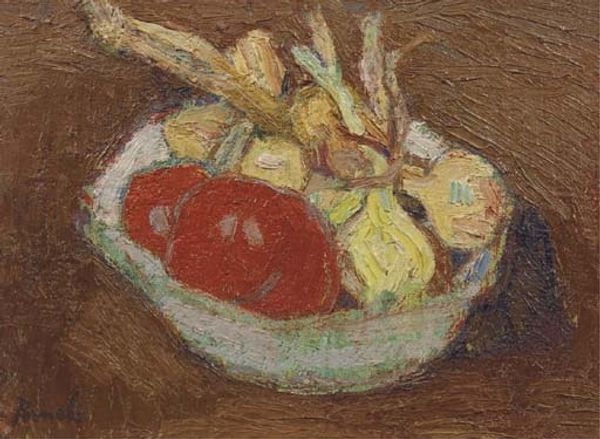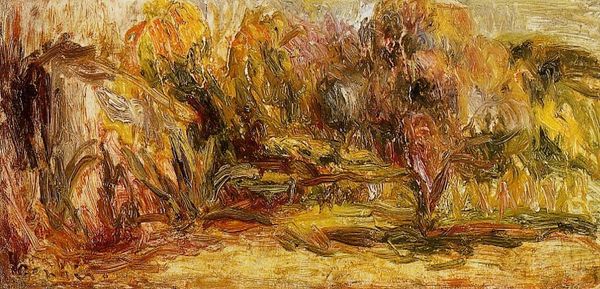
painting, oil-paint
#
painting
#
oil-paint
#
oil painting
#
fruit
#
matter-painting
#
post-impressionism
#
expressionist
Copyright: Public Domain: Artvee
Curator: Oh, my, it's so… yellow. That viscous golden field just seems to vibrate. Editor: Indeed. What we have here is “Quinces, Lemons, Pears, and Grapes,” painted by Vincent van Gogh between 1887 and 1888. Van Gogh was deeply interested in color theory during his time in Paris. He wrote about complementary colors and the power of their juxtaposition. Curator: It is practically monochromatic. Is the goal here simply to investigate tone and texture using humble fruit as models? Editor: I think it’s more complex than that. Looking closely, you see the swirling brushstrokes create a sense of almost frantic energy, the background merging into the foreground. He was not simply painting the objects, he was exploring something beyond representation, conveying his emotional state. There's a strong tension between the still life tradition and his radical subjectivity. The act of looking at the everyday transforms it into something imbued with profound personal meaning. Curator: Well, to look at it through the lens of modern experience and interpret the use of this luscious produce... could this also serve as a commentary on consumption, a reflection on the burgeoning consumerism of the late 19th century? Or perhaps it speaks to the historical and social constructs surrounding wealth and its display? The choice of these particular fruits—golden and bountiful—invites analysis beyond the purely aesthetic, hinting at complex societal issues. Editor: Interesting angle. It also reflects Van Gogh's engagement with color semiotics. The color, while overwhelming, isn’t random. The yellow and the ochre would represent joy but also a potential for instability, like ripeness bordering on decay. Look how he renders light: It gives each object a dimensionality, despite the somewhat flattened perspective. He creates texture using impasto—that thick application of paint—making it an object lesson in his methodology. Curator: Looking at the fruit almost dissolving into the ground, it reminds me of questions around identity. What parts of us can dissolve and merge? It reflects how Van Gogh, often an outsider, blended his unique vision into the art world. Editor: I see that perspective. And from a formal standpoint, one might note that its deceptive simplicity is a showcase for complex compositional choices and chromatic investigation, an offering of the artist's feelings on canvas. Curator: Indeed, from my point of view, this is a lens through which we might better perceive not just artistic style but humanity itself. Editor: An excellent summation. This fruit offers much more than it appears at first glance.
Comments
No comments
Be the first to comment and join the conversation on the ultimate creative platform.
